The 1960s were a time of vibrant change and experimentation, not just in fashion and music, but also in culinary creations. While some trends from this iconic era were delightful, others are best left in the past. Here, we revisit 21 food trends from the 1960s that have thankfully faded into obscurity, each more curious than the last. These relics of the culinary world remind us of a time when creativity often overshadowed palatability.
Aspic Salads
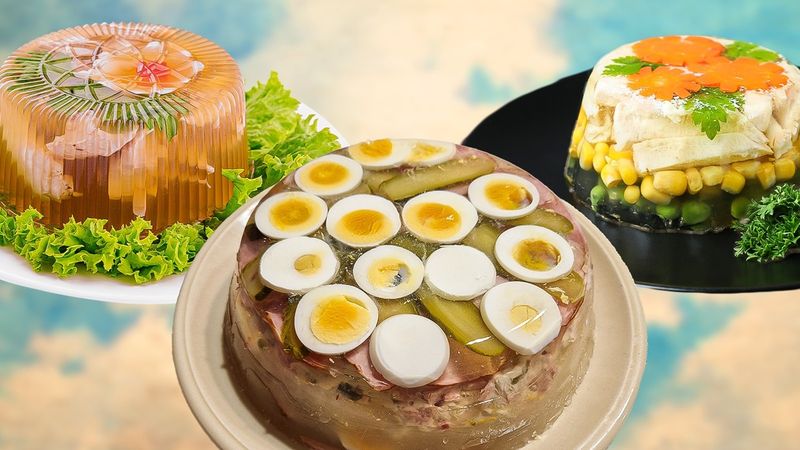
Jellied salads, known as aspics, were all the rage in the 1960s. Imagine a colorful gelatin mold, brimming with embedded vegetables and sometimes even chunks of meat. These culinary curiosities were often the centerpiece at gatherings, despite their questionable appeal to modern palates.
The aspic’s shimmering surface may have been visually enticing, yet its wobbly texture and cold, savory taste combination left much to be desired.
It’s a dish that challenges the very essence of what a salad should be, proving that not all retro trends deserve a comeback.
Liver Loaf
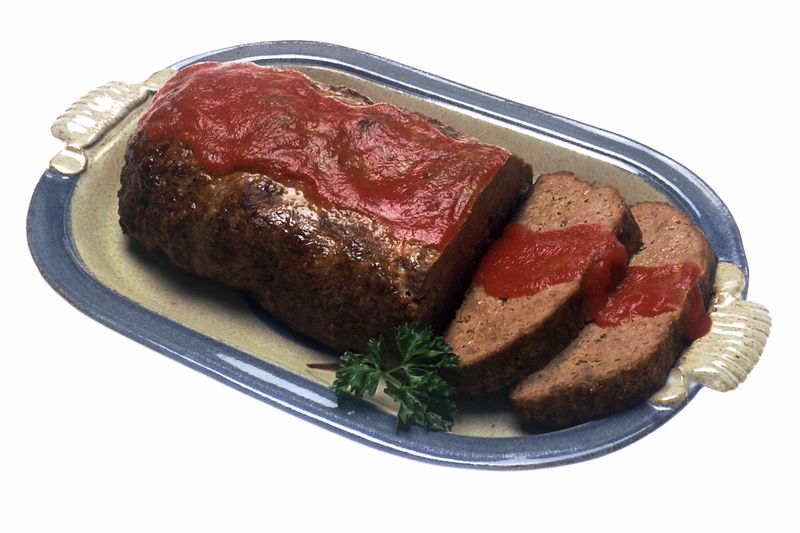
Liver loaf was a staple on many dinner tables during the 1960s. This dense, meat-based loaf was often made from finely ground liver and other organs, mixed with spices and baked to perfection—or so they thought.
With a rich, iron-heavy flavor, liver loaf was a divisive dish; loved by some, dreaded by others.
While it was considered a nutritious meal back then, today’s diners often find its taste overpowering and its texture unappealing, making it a dish best left in the past.
Canned Fruit Cocktail
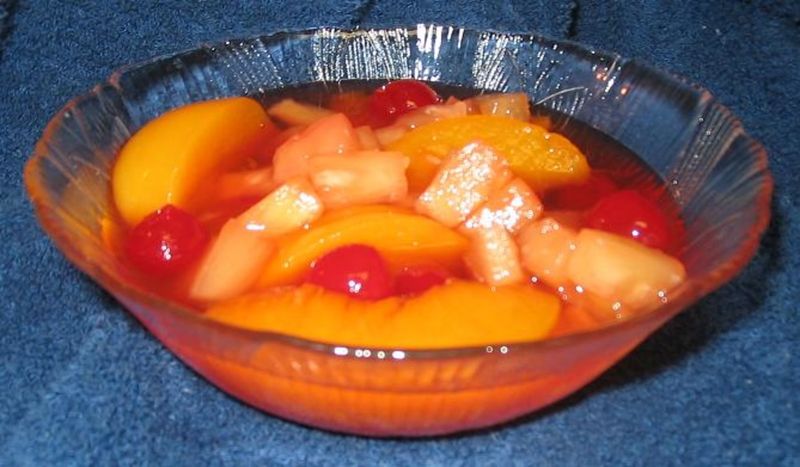
In the 1960s, canned fruit cocktail was a dessert staple, often served in its syrupy sweetness straight from the tin. The appeal lay in its convenience, offering a ready-made mix of pears, grapes, cherries, and peaches.
However, the overly sweet, syrup-laden concoction could never rival the taste of fresh fruit.
Today, with a focus on fresh produce and natural flavors, this canned concoction feels like a distant sugary memory—one that’s better left unopened.
Ambrosia Salad
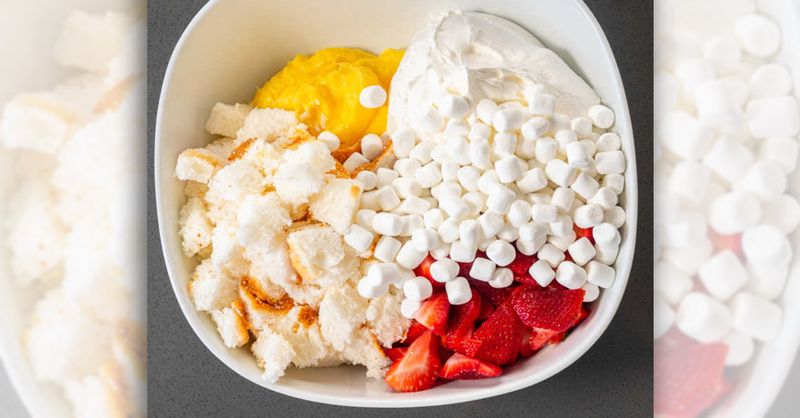
Ambrosia salad, a sweet concoction of canned fruit, marshmallows, and coconut, epitomized the sweet tooth of the 1960s. Often served at picnics and family gatherings, it promised a taste of paradise but delivered a sugar overload.
The combination of chewy marshmallows and syrupy fruit might have been trendy, but today it’s seen as a relic of a sugar-crazed era.
While some may hold nostalgic affection for ambrosia salad, its cloying sweetness makes it a dish most choose to forget.
Tang-Flavored Treats
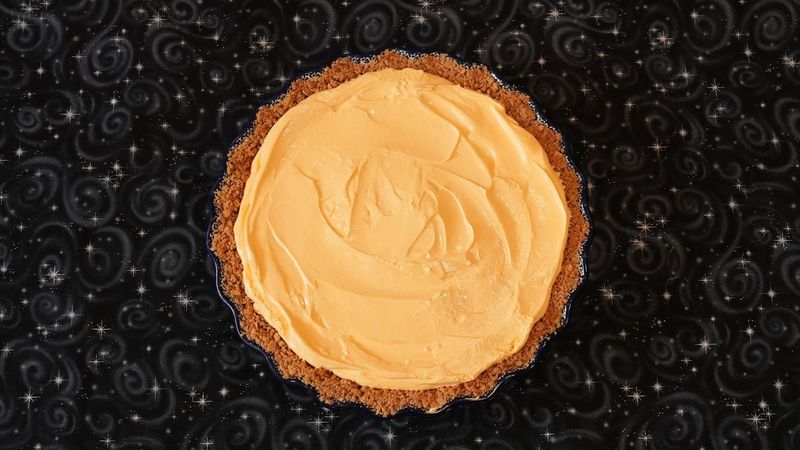
The orange-hued Tang drink mix, famously consumed by astronauts, found its way into many 1960s kitchens. Ingenious homemakers used it to flavor cakes, frostings, and even sauces.
While its space-age credentials were attractive, the artificial taste of Tang-flavored treats left much to be desired.
Today, with an emphasis on natural ingredients, the era of Tang-infused delicacies seems firmly grounded, leaving only memories of its bright color and tangy flavor.
Gelatin Molded Fish

In the 1960s, it wasn’t uncommon to find fish molded in gelatin, a trend that baffled many diners. This seafood oddity combined cold fish with the wobbly texture of gelatin, creating a perplexing dish.
The visual appeal of the fish-shaped mold often masked the peculiar taste and texture combination within.
Today, the idea of encasing fish in gelatin feels like a culinary mismatch, a bygone trend that few would wish to revive.
Spam Casserole
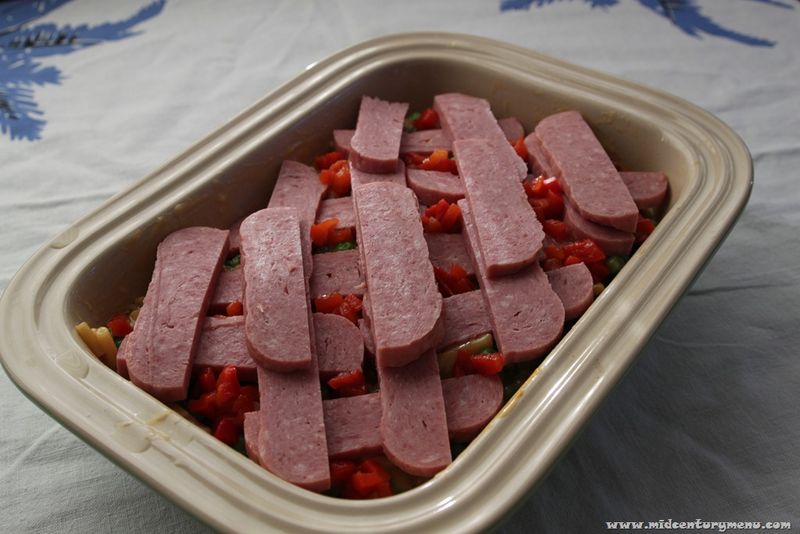
Spam, the canned pork product, was a versatile ingredient in the 1960s, often featured in casseroles. Touted for its convenience and shelf stability, it was mixed with vegetables, cheese, and sauces, then baked to form a hearty meal.
While Spam casseroles were easy to prepare, the processed meat’s salty flavor overshadowed the dish.
Today, while Spam has found niche popularity, its role in casseroles is largely relegated to nostalgia, making it a trend that’s best left in the past.
Cheese Ball
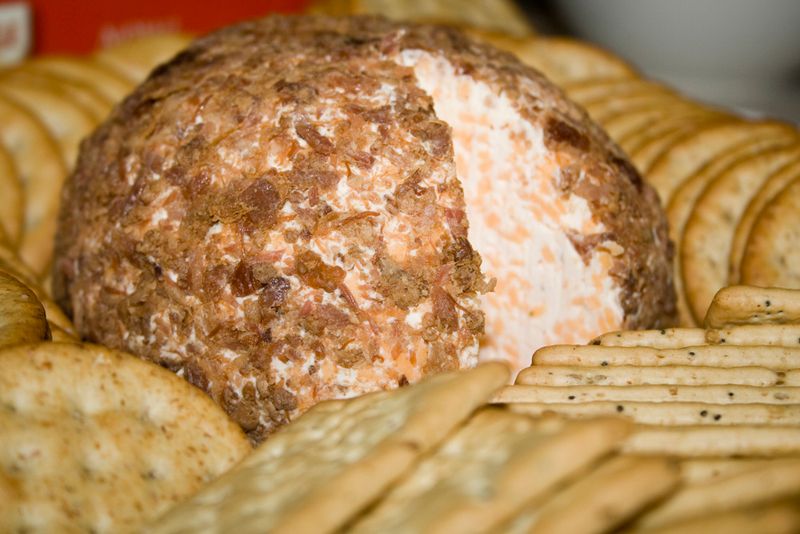
The cheese ball was a party staple in the 1960s, often crafted from a blend of cream cheese and other cheeses, rolled in nuts or herbs. Served with an array of crackers, it was both easy to prepare and serve.
Despite its simplicity, the cheese ball’s rich, heavy flavor and dense texture are less appealing to modern tastes.
As culinary trends have evolved, the cheese ball’s popularity has waned, becoming more of a nostalgic memory than a party essential.
TV Dinners

The advent of TV dinners in the 1960s revolutionized mealtime convenience. Packaged in aluminum trays, these meals offered a quick solution for families gathered around the television.
While the idea was novel, the taste and quality often left much to be desired, with each compartment lacking freshness.
Today, with the focus on fresh and wholesome meals, TV dinners have largely been replaced by healthier options, leaving these divided trays as a symbol of convenience over quality.
Deviled Ham
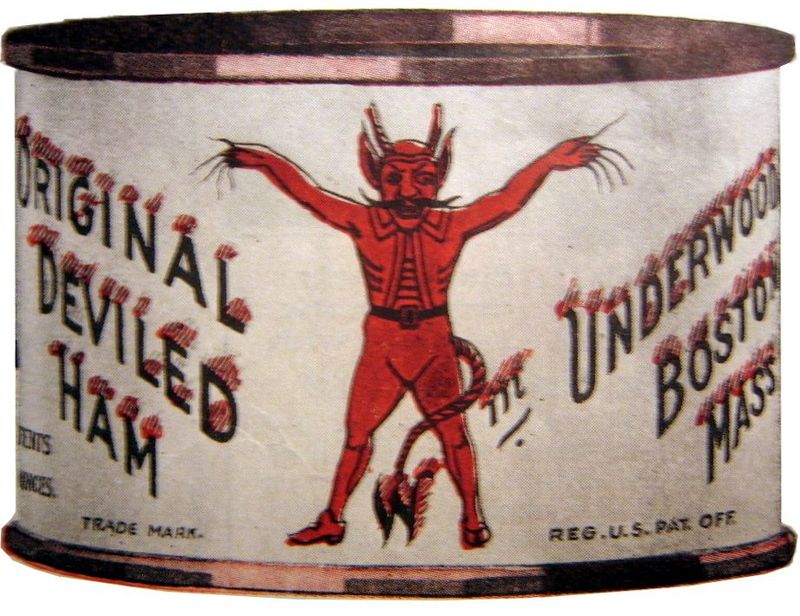
Deviled ham, a canned meat product, became a pantry staple in the 1960s. Often used as a sandwich filling, its spicy, savory flavor was both convenient and portable.
However, the processed taste and texture of deviled ham often overshadowed its convenience, making it less appealing over time.
While it offered quick meal solutions back then, today’s focus on fresh and healthy ingredients leaves deviled ham as a culinary relic of the past.
Vienna Sausages

Vienna sausages, small canned sausages, were a popular snack in the 1960s. Often served as hors d’oeuvres or in casseroles, their small size and salty flavor made them a convenient choice.
Despite their popularity, the processed taste and soft texture of Vienna sausages lacked the appeal of fresh alternatives.
Today, the preference for unprocessed meats has left these small sausages as a curiosity of the past, rarely making appearances on modern menus.
Frozen Jellied Turkey
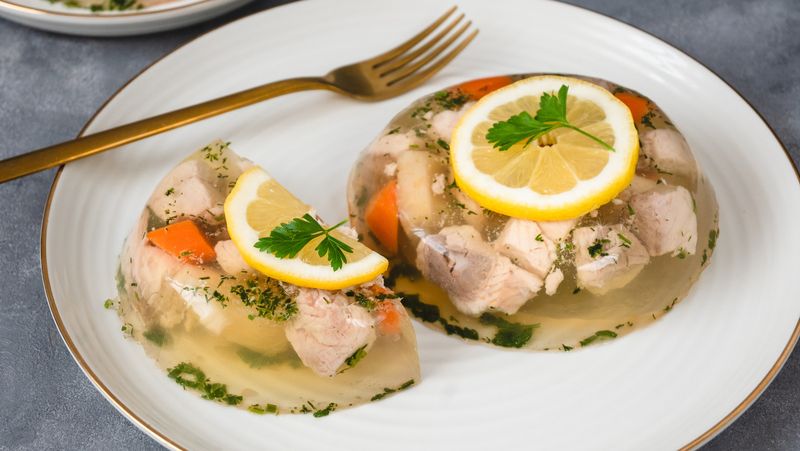
Frozen jellied turkey was a 1960s Thanksgiving sensation, combining the holiday bird with a gelatinous glaze. This unusual preparation preserved the turkey and provided a glossy finish.
However, the cold, rubbery texture of the jellied turkey was less than appetizing, making it a holiday novelty rather than a favorite.
As culinary tastes have evolved, the idea of encasing turkey in gelatin seems quaintly unappetizing, a trend that’s best remembered rather than resurrected.
Celery with Cheese Whiz
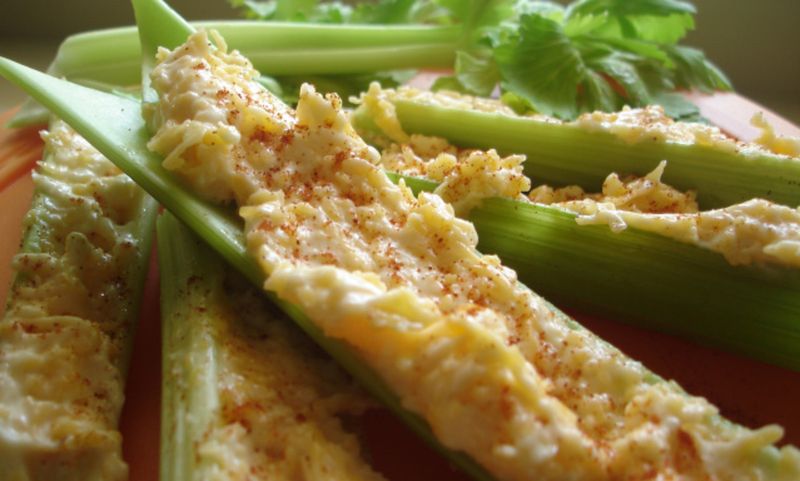
Celery filled with Cheese Whiz was a quick and easy snack that graced many a 1960s party platter. The combination of crisp celery and smooth, processed cheese was both convenient and visually appealing.
Despite its popularity, the artificial taste of Cheese Whiz often dominated the snack, making it less favorable over time.
With today’s preference for fresh and natural ingredients, celery with Cheese Whiz has become a nostalgic memory rather than a party necessity.
Pineapple on Pizza

Pineapple on pizza, known today as Hawaiian pizza, found its beginnings in the 1960s. The combination of sweet pineapple and savory ham divided pizza lovers from the start.
While its exotic appeal attracted some, purists often frowned upon the fruity topping.
Despite its continued presence on menus, the debate over pineapple’s place on pizza remains. For many, it’s a trend that harkens back to an era of culinary experimentation that doesn’t align with traditional tastes.
Chicken à la King
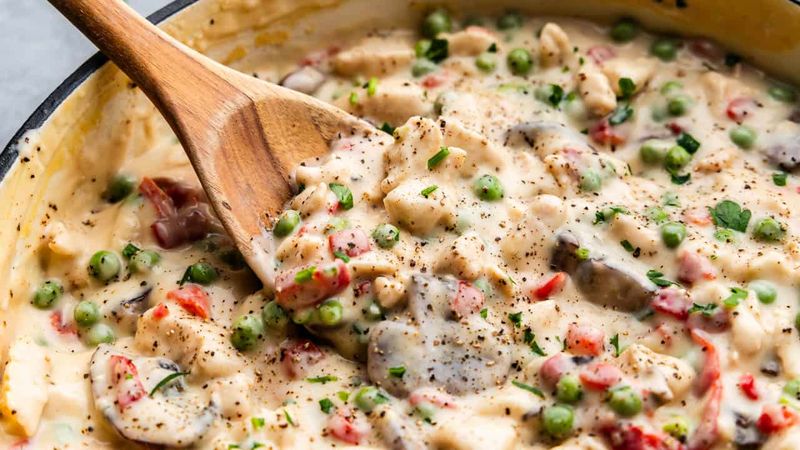
Chicken à la King, with its rich cream sauce and tender chicken, was a 1960s classic often served over toast or rice. Its hearty, comforting flavors made it a popular choice for family dinners.
However, the heavy, creamy sauce can overwhelm the delicate flavors of the chicken, leading to a dish that feels more indulgent than necessary.
Today, as lighter, more balanced meals are favored, Chicken à la King’s rich and dense nature makes it a dish more suited to memory than the menu.
Banana and Mayonnaise Sandwich
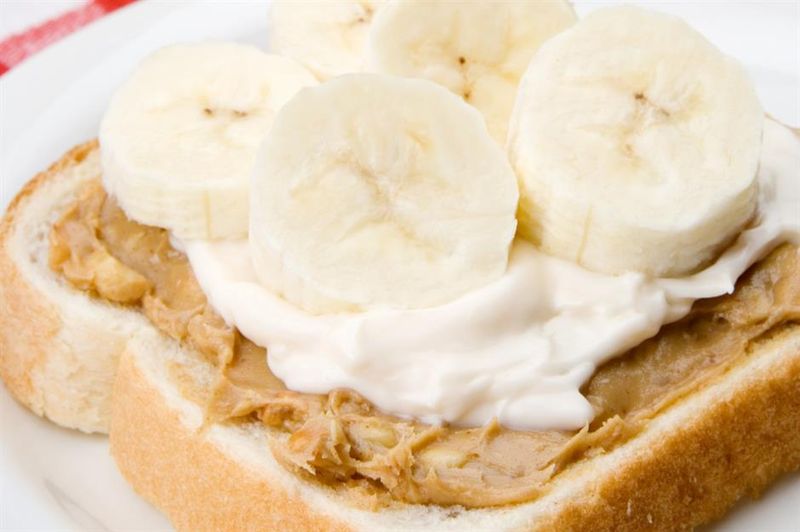
The banana and mayonnaise sandwich was a peculiar trend of the 1960s, combining sliced bananas with a generous spread of mayonnaise. This unlikely pairing was a quick and budget-friendly snack.
Yet, the creamy, tangy mayo clashed with the sweet, soft banana, creating a taste that puzzled many.
As culinary trends shifted towards more harmonious flavors, this sandwich became a forgotten oddity, its unusual combination better suited to past experimentation than present enjoyment.
Perfection Salad
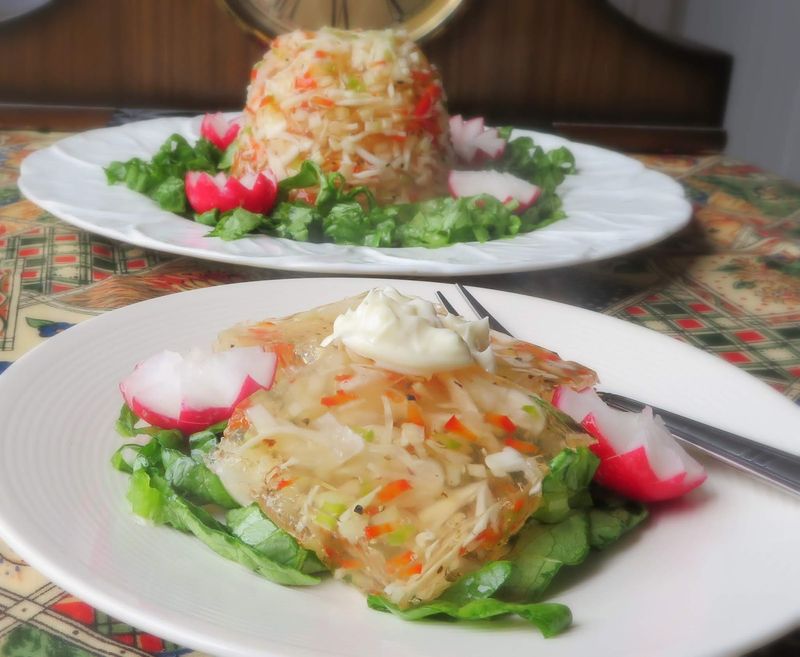
Perfection Salad was a molded gelatin dish that aimed for culinary elegance in the 1960s. Filled with shredded vegetables and flavored with vinegar, it promised a tangy twist on the traditional salad.
However, the cold, congealed texture and tart flavor made it an acquired taste few truly embraced.
Today, with fresh salads taking center stage, Perfection Salad’s jiggly, vinegary profile is more of a culinary footnote than a feature.
Frozen Cheese Soufflé

The frozen cheese soufflé was a daring dessert of the 1960s, combining the airy texture of a soufflé with the convenience of a frozen treat. Its cheesy flavor and smooth consistency were unique, if not universally loved.
However, the idea of a cold, cheesy dessert perplexed many palates, and its appeal quickly waned.
In today’s culinary landscape, where flavor profiles are more harmonious, the frozen cheese soufflé remains a curiosity rather than a classic.
Tomato Soup Cake
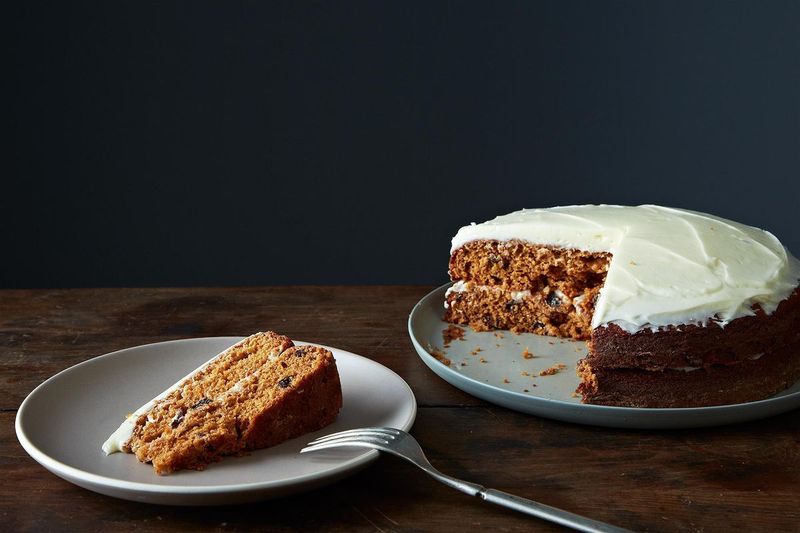
Tomato soup cake was a surprising favorite in the 1960s, using condensed tomato soup as a base ingredient. This gave the cake a moist texture and an unexpected flavor profile.
Though innovative, the combination of sweet cake and savory soup confused many taste buds.
Today, with more conventional flavor combinations preferred, tomato soup cake stands as a testament to the experimental spirit of the 1960s, better remembered than revived.
Shrimp Cocktail Aspic
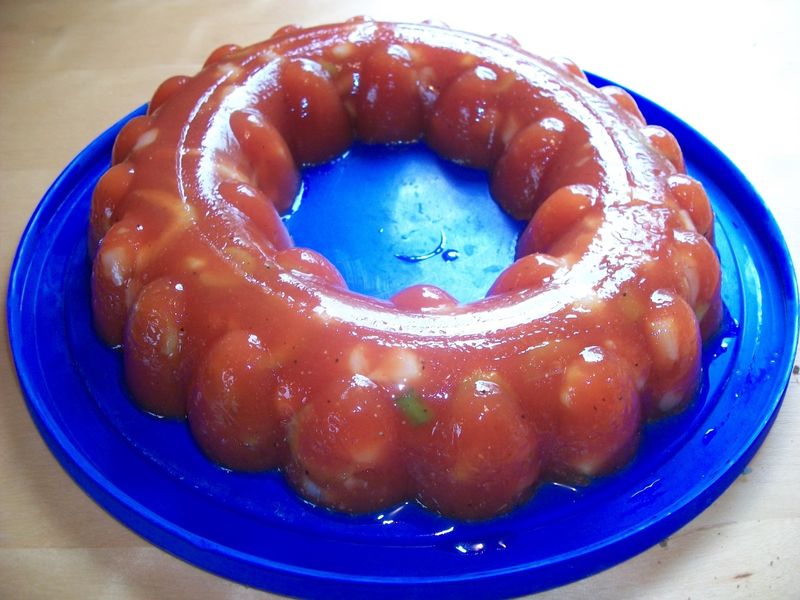
The shrimp cocktail aspic was a 1960s appetizer that combined shrimp with a tangy gelatin mold. This dish, though visually striking, often presented a challenging taste experience.
The cold, rubbery texture of gelatin paired with the delicate flavor of shrimp was a juxtaposition that few found appetizing.
While shrimp cocktails remain popular, encasing them in gelatin is a trend that modern palates typically avoid, leaving it firmly in the past.
Hot Dr. Pepper

Hot Dr. Pepper was a curious beverage trend of the 1960s, involving heating the soda and serving it with a slice of lemon. This experimentation with a familiar soft drink intrigued some but puzzled many.
The warm, sweet, and fizzy concoction was a novelty but never truly caught on as a favorite.
As preferences have shifted towards more refreshing beverages, Hot Dr. Pepper remains a quirky footnote in the history of soft drinks, best left as a nostalgic experiment.
Leave a comment